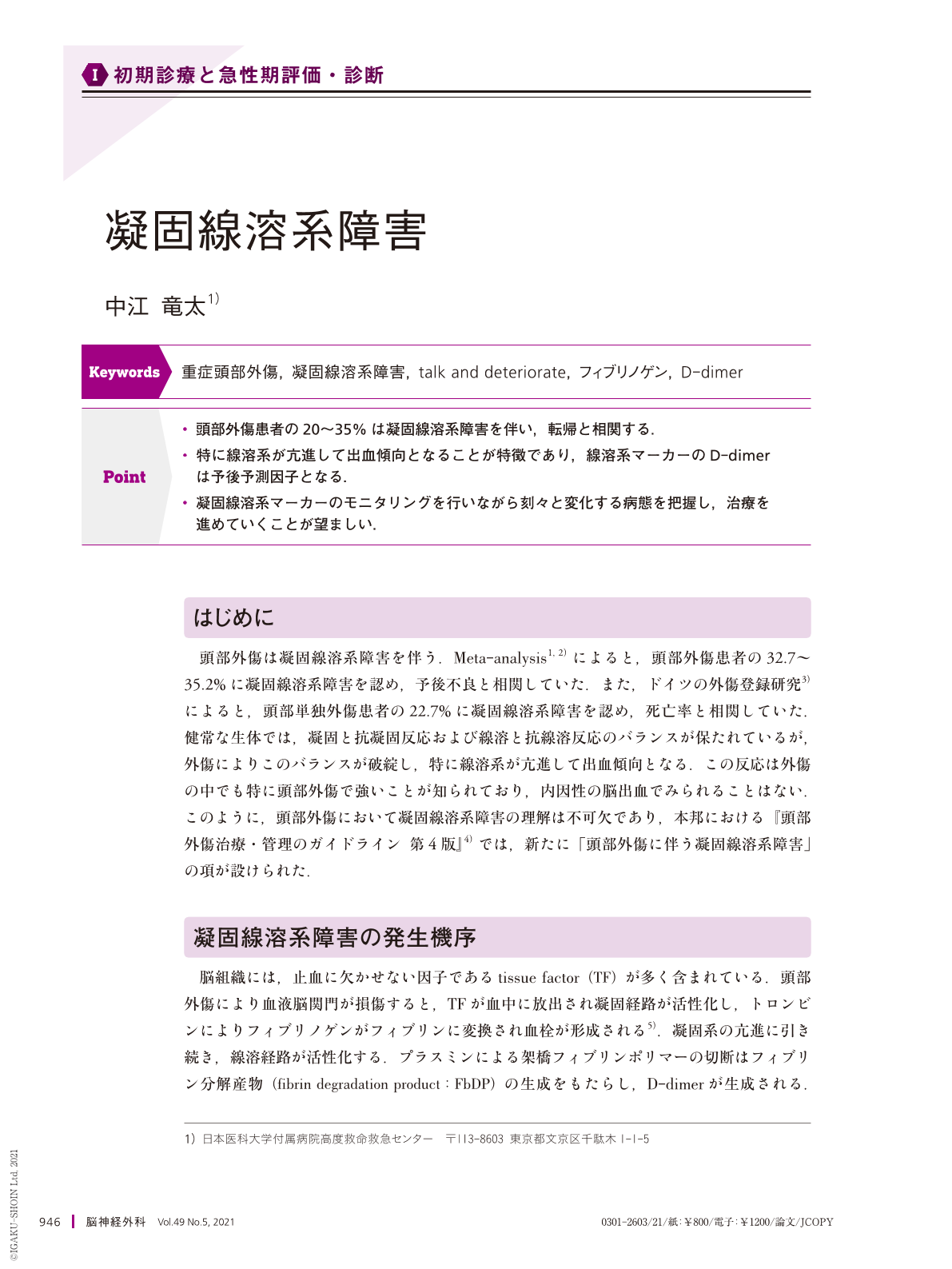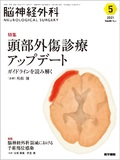Japanese
English
- 有料閲覧
- Abstract 文献概要
- 1ページ目 Look Inside
- 参考文献 Reference
Point
・頭部外傷患者の20〜35%は凝固線溶系障害を伴い,転帰と相関する.
・特に線溶系が亢進して出血傾向となることが特徴であり,線溶系マーカーのD-dimerは予後予測因子となる.
・凝固線溶系マーカーのモニタリングを行いながら刻々と変化する病態を把握し,治療を進めていくことが望ましい.
Traumatic brain injury(TBI)is associated with coagulation and fibrinolytic disorder. It is characterized by consumptive coagulopathy and secondary hyperfibrinolysis associated with hypercoagulability and by hyperfibrinolysis due to the release of tissue plasminogen activator from the injured brain. Thrombin antithrombin Ⅲ complex, a coagulation parameter, is abnormally high immediately after TBI and declines 6 hours after TBI. Fibrinogen, a coagulation factor, is rapidly consumed and degraded within 3 hours of TBI. D-dimer, a fibrinolytic parameter, is abnormally high on arrival at the hospital and reaches its maximum value 3 hours after TBI; during this time, bleeding tendency increases. Plasminogen activator inhibitor-1, a parameter of fibrinolysis shutdown, peaks at 6 hours after TBI. D-dimer is also known to be a prognostic factor. Patients with a high D-dimer level despite a good level of consciousness on admission are more likely to be “talk and deteriorate.” Administration of tranexamic acid, an anti-fibrinolytic agent, early in the acute phase of TBI may reduce mortality. Fresh frozen plasma transfusion should be performed within 3 hours of TBI with monitoring of fibrinogen levels, and the administration dose should be set with a target fibrinogen level of ≧ 150 mg/dL. However, excessive administration should also be avoided.
Thus, in the acute phase of TBI, coagulation and fibrinolytic activity changes dynamically and may adversely affect the complicated injury; therefore, monitoring coagulation and fibrinolytic parameters while conducting treatment is recommended.

Copyright © 2021, Igaku-Shoin Ltd. All rights reserved.


